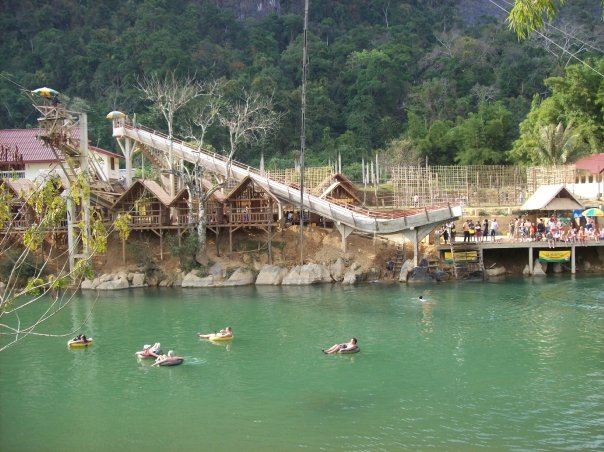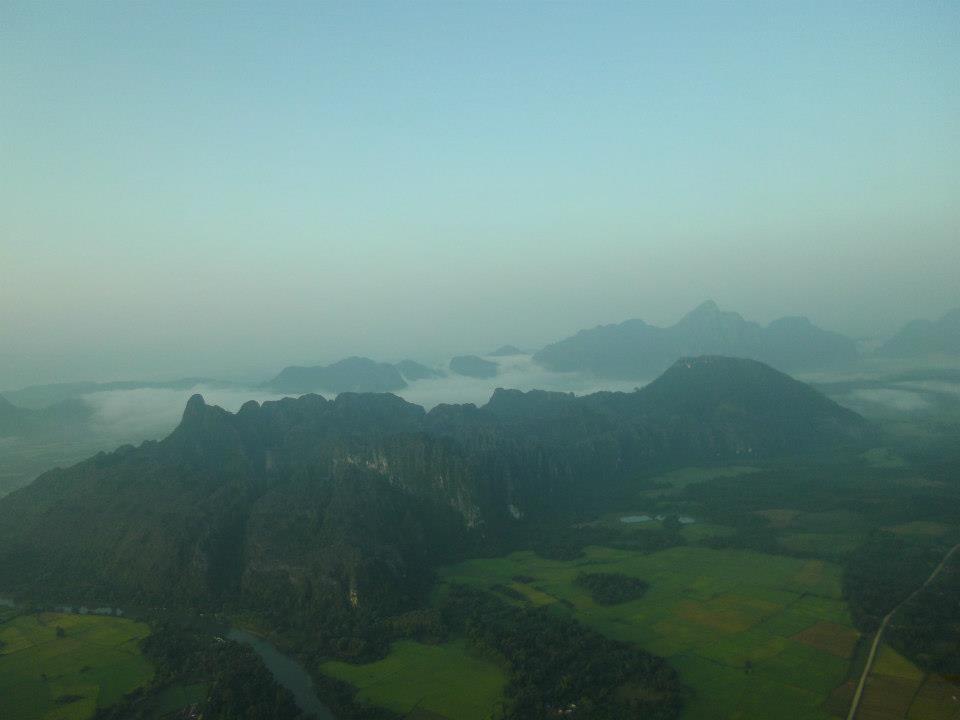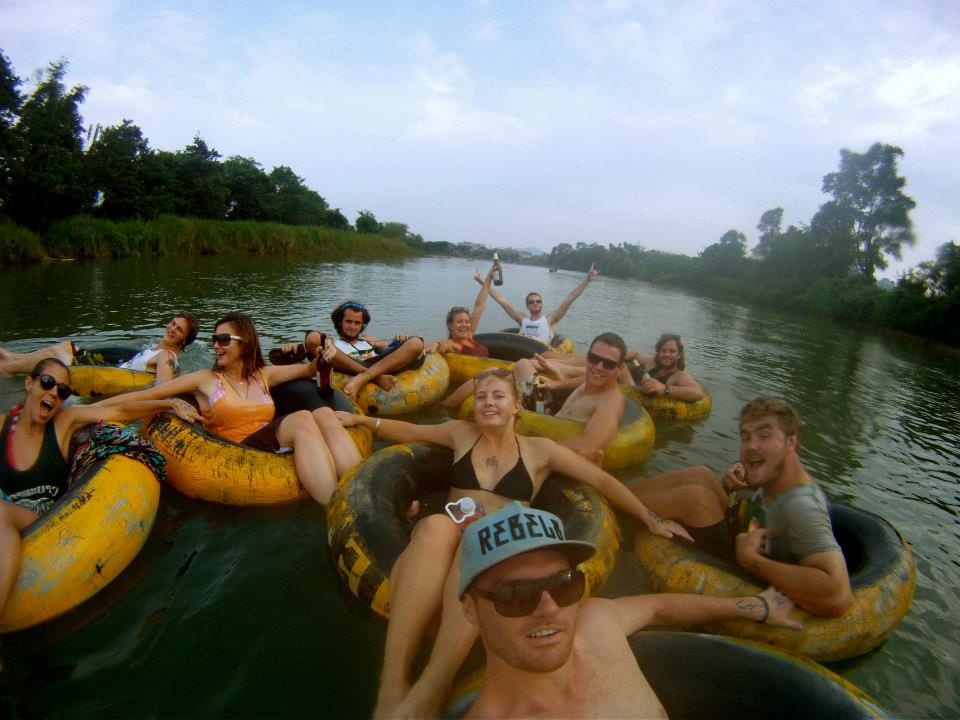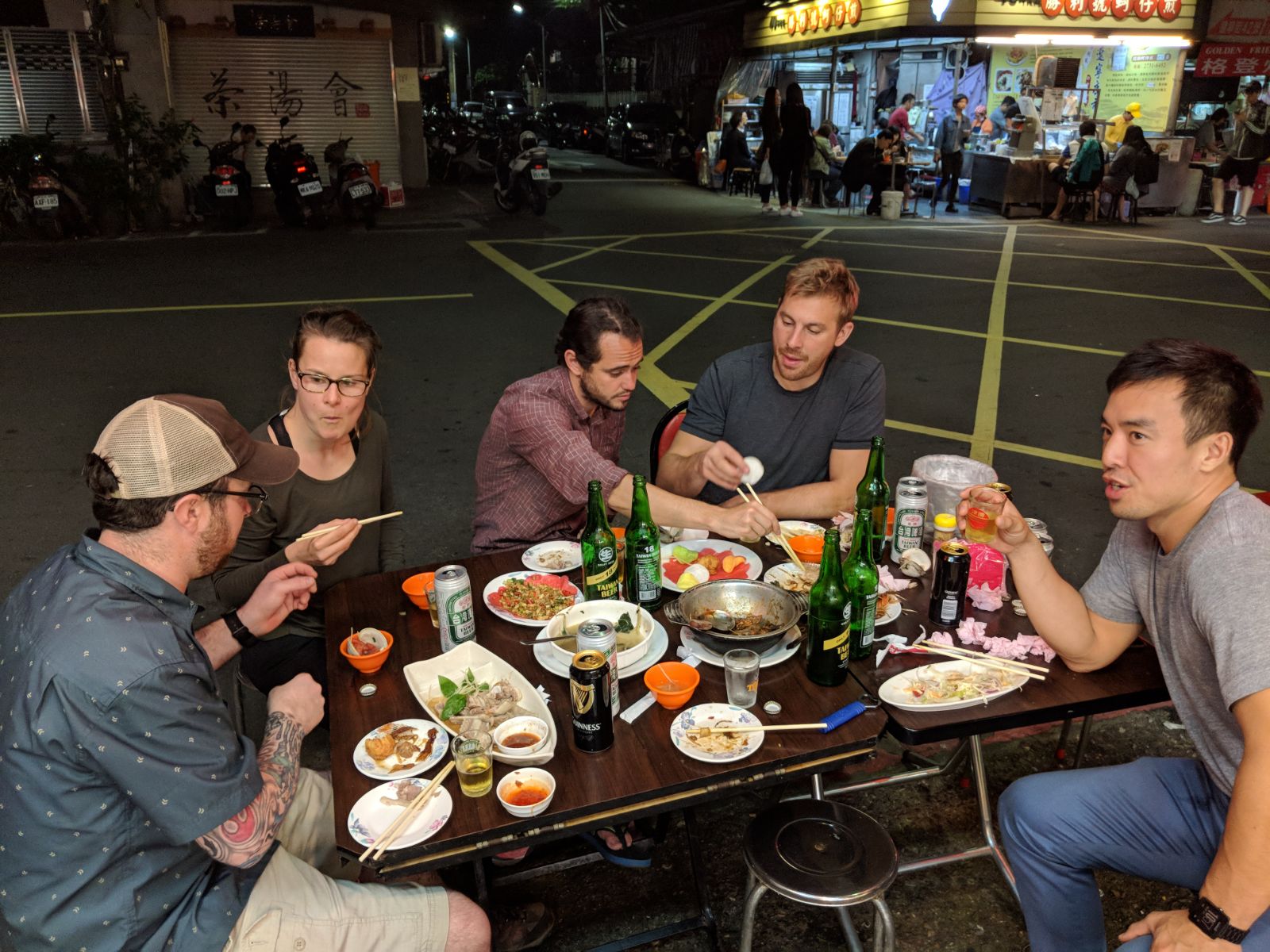It was one of the most bitterly disappointing moments of my life.
I was standing on the banks of the Nam Song River in Vang Vieng, on a blistering hot September morning, a warm beer in one hand and a waterproof string bag slung over my shoulder, staring in stunned disbelief at the piles of rubble all along the riverbanks that had once been insanely popular riverside bars. For more than a year prior to that day, I’d been researching and planning and talking and visualising to myself what it would be like to go Tubing – to get wild and crazy in the party capital of Laos, on the infamous stretch of the Nam Song river, indulging and immersing myself in the ultimate and most dangerous of activities in all of South East Asia!
But, as I stood there on the banks of the river on that hot day in 2012, exchanging shocked looks with my fellow travel companions, I soon found out that only recently the army had rolled in with bulldozers and sledgehammers and levelled every riverside bar in Vang Vieng, with the aim of killing and burying the Tubing tradition for good. This legendary backpacker’s activity had been enjoyed by literally hundreds of thousands of revellers for much more than a decade, and we had missed it by about three weeks.
Instead of joy, there was only sorrow. Instead of a high-octane day long party, I discovered the end of a long, ugly and eventful story.
Feeling deflated and crestfallen, my friends and I retreated to a nearby bar that was slightly set back from the river but not on it (possibly the reason why it was spared the death penalty, but who knows), ordered a round of beers, and looked out at the empty stretch of water. It was obviously still a very beautiful town despite the absence of Tubing, and it’s very difficult to remain mad about anything in SE Asia. But when the anger subsided, the question still remained…
‘What the hell happened here?’

To answer that question, we need to go back and take a brief look at the events leading up to it. In doing so, I discovered that Laos, despite it’s endless beauty, has suffered a significantly ugly history.
Laos became a prominent destination on the hippie trail in the very early 60’s, when the world was in a much different state of affairs than it is now. The capital, Vientiane, briefly became a mecca for hippy backpackers and even boasted the world’s largest legal opium den. This, along with its untouched, mountainous rainforest paradise surroundings, attracted a steady stream of overland travellers from all across the world via Afghanistan and India. It was, by all accounts, an unspoiled backpackers’ paradise.
It didn’t last long.
From 1964 to 1973, the U.S. began its brutally violent conflict with the North Vietnamese, and in the ensuing carnage, the Americans dropped more than 2,000,000 tons of explosives on Laos during an incredible 580,000 bombing missions. To put that into context, that’s equal to a planeload of bombs being dropped every 8 minutes, 24-hours a day…FOR 9 YEARS! Statistically, this makes Laos the most heavily bombed country per capita in history – a record that will likely never be broken (let us hope).
Unsurprisingly, many livelihoods – and indeed lives – were lost, and much of Laos’ lush, untouched mountains and rainforests were destroyed forever. The devastating effects of this grotesque act of war can still be seen today; on many hiking routes in and around Laos, warning signs can be seen, urging hikers not to stray off the paths, as there are still hundreds of unexploded bombs embedded in the earth, often treacherously hidden from view, just waiting for some poor soul to accidentally step on it….
When the carnage eventually subsided in ‘73, it took a further decade for Laos’ surviving inhabitants to lick their wounds and rebuild some of what had been lost. The natural environment slowly began to recover, but it soon became sadly clear that Laos had taken too heavy a beating, and that the scars of war were too deep to heal. Paradise was lost – Laos would never fully resemble its former self.
Still, the Laotians pushed forward, and by the early 1990’s, the natural environment was beginning to look a little better, and many rice fields, crops and cattle farms were starting to regain momentum.
It was around this time that a local man named Thanongsi Sorangkoun cleared a small piece of land on the banks of the Nam Song river in Vang Vieng and set up a small organic farm. At around the same time, tourists were slowly starting to trickle back into Laos. Seeing an opportunity, Sorangkoun built a guesthouse for foreigners who wanted to volunteer to work in his fields, tending to mulberry trees and vegetable gardens in the hot, tropical climate. The plan was a big success for Sorangkoun; the tourists came in steady but modest numbers, the farm thrived, Laos was on the road to recovery, and Sorangkoun was happy.
Then, a few years later in 1998, Sorangkoun made an entirely innocent yet deeply fateful purchase that would forever change the face of the entire country; he bought some inner tubes for his volunteers. He figured it would be a cheap and ecological way for his guests to see the river and unwind at the end of a hard days’ work. Alcohol and music were soon added to the mix, and things began to escalate in shocking and unprecedented ways.
Sorangkoun could not have known it at the time, but he had started a chain of events that would forever alter countless people’s lives. His small and simple decision to buy just a few inflatable inner tubes as a reward for his guests’ hard work would have far reaching consequences of epic proportions.
Sorangkoun had accidentally invented ‘Tubing’.
In no time at all, word had gotten out, and travellers began piling into Vang Vieng seeking out Sorangkouns guesthouse. The agricultural volunteer work had become of secondary importance – the travellers had discovered a new and unique way to party in paradise, and the number of visitors to Vang Vieng began getting overwhelmingly larger by the day.
It’s not known whether or not Sorangkoun was able to recognise the catastrophe that was to come, but in the longer scheme of things it didn’t really matter; Sorangkoun had awoken a sleeping beast, and it was suddenly so big that he was completely powerless to stop it, even if he’d wanted to. The number of Tubing visitors in Vang Vieng soon hit the multiple thousands, and at that point, Sorangkouns neighbours and other locals, spurred on by the swaths of cash that the new visitors were suddenly generating, frantically began building up new structures and businesses along the riverbanks to meet the growing demand for tubes, alcohol, and eventually, drugs. It is estimated that over 1,500 households eventually abandoned their old businesses and fully committed themselves, their futures and their livelihoods to the Tubing bubble.
Looking back, it seems unfair to blame them; they were poor, and suddenly they had something that the comparatively rich tourists were more than willing to pay for. However, in order to reap the benefits of the new tubing craze, they realised too late that they had to sacrifice a piece of themselves.
They say money talks – and you’ll never find a better example of how true this than the story of Vang Vieng. The town was hardly built to support thousands of party minded Western youngsters – who were just as dead set on partying at night time in the bars than they were in the day time on the river – and the ensuing carnage turned the once ambient, peaceful and quiet town of Vang Vieng into an unrecognisable pit of sex, drugs, partying and debauchery. Moreover, the natural environment, which had only just begun to recover from the relentless bombing in the 60’s and 70’s, also suffered greatly as large amounts of plastic waste and debris found its way into the rivers and surrounding forests. The river itself, which was once a peaceful place where local monks and families used to go to bathe, play, relax and fish, was now lost to them, since it had been completely consumed by the ugly culture of the West. None of the locals went anywhere near it. There were further problems with culture and religion. Laos was, and still is, a very modest country with strict Buddhist values. Vang Vieng was no exception, but the air of holiness in the town had been replaced by shocking scenes that directly contradicted all of the nations’ Buddhist beliefs and values – Young white teenagers drinking until they threw up everywhere, bars selling weed and opium as freely as sandwiches, and enough public sex and nudity to make even the most liberal minded of locals turn away in disgust. There were even unconfirmed rumours that local Laotian young teenagers were developing unhealthy drink and drug habits after spending too much time by the river. Many shareholders and business owners found themselves trapped in a classic tourism catch-22 – they’d become too dependent on the income tubing generated to shut down the businesses, but they were paying a much higher price than they’d ever expected for its success. The promise of riches had convinced the people of Vang Vieng to sacrifice their only sacred cow. They had, quite literally, sold their own souls.
Tubing continued nonetheless, and only grew bigger and stronger. The tourists continued to arrive in droves, and the Laotians in Vang Vieng were under constant pressure to meet the ever-growing demand for booze and drugs, and to keep the tubing bubble alive. It was, after all, their livelihoods whether they now liked it or not. Dangerously big ‘rope swings’ were suspended from man made frames, along with so called ‘death-slides’ and platforms designed for the specific purpose of doing dives and backflips into the rocky bottomed, murky river. The purpose of this was to give Tubing even more of an appeal. People often broke bones and suffered horrific injuries after drunkenly launching their bodies into the water without knowing the depth or the state of the river bed below. And occasionally, things got a lot worse.
Its unclear exactly when the first Tubing fatality occurred, or to whom. One can only assume it happened quite early on in the craze, but all involved must have known that it was inevitable from day one. They must have also recognised the logical facts too, as tubing numbers began to get bigger and bigger; more tubers = more accidents. More accidents = more death. Unsurprisingly, that’s exactly how it happened.
Death was ever present on the Nam Song. Stories began to circulate in the western media of teenagers and adults who had fallen unconscious on the river and had been carried away in their tubes to their deaths by the strong currents. Some would jump into the water headfirst and be instantly killed when they slammed in to the rocks below. Others simply either OD’d or got drunk and drowned, and as the activity got bigger, the annual fatality rate only grew larger and more alarming. So much so that the Western governments began to keep tabs.
Then, in late 2011, the tubing bubble finally popped. The number of fatalities that year was a record breaking 27. Enough was enough. Already under immense international pressure from western governments to act, the Laotians finally caved, and at the beginning of 2012, the authorities decided the party was over. They sent in the military to make sure a permanent job was made of it. To add to the tubing onslaught, a strict law was passed that made consuming alcohol on the Nam Song punishable by fines and possibly imprisonment. The Laotians who had chosen to dedicate their livelihoods to the tubing craze faced certain ruin, and the future of Vang Vieng, which had become heavily modified to accommodate the craze, became uncertain.
The day after we arrived in Vang Vieng and realised we’d arrived too late to the party, we found out that you can still rent inner tubes and float down the river – you just can’t do it whilst drunk. Choosing to respect this law and determined to take just one tiny Tubing memory away with us, we set our tubes on the river and floated peacefully along with the currents. It was quiet, it was peaceful, and it was beautiful. Along the way, we passed by groups of Laotian children playing joyfully in the river, and we realised that this could be one of the first times in their lives that they had been free to do this without the danger and moral corruption that came with now dead tubing tradition. Like the rest of Laos, Vang Vieng was once again on the road to recovery. I leaned back in my tube and looked up at the mountainous backdrop. The sun was setting behind the cliffs, and all around me the sounds of nature filled the early evening air. In that moment, I understood that after all is said and done, Vang Vieng is still beautiful enough to have a future in the tourism industry, and underneath the piles of rubble and memories of death and destruction, there is still a deeply holy and magical place waiting for its opportunity to grow again.




